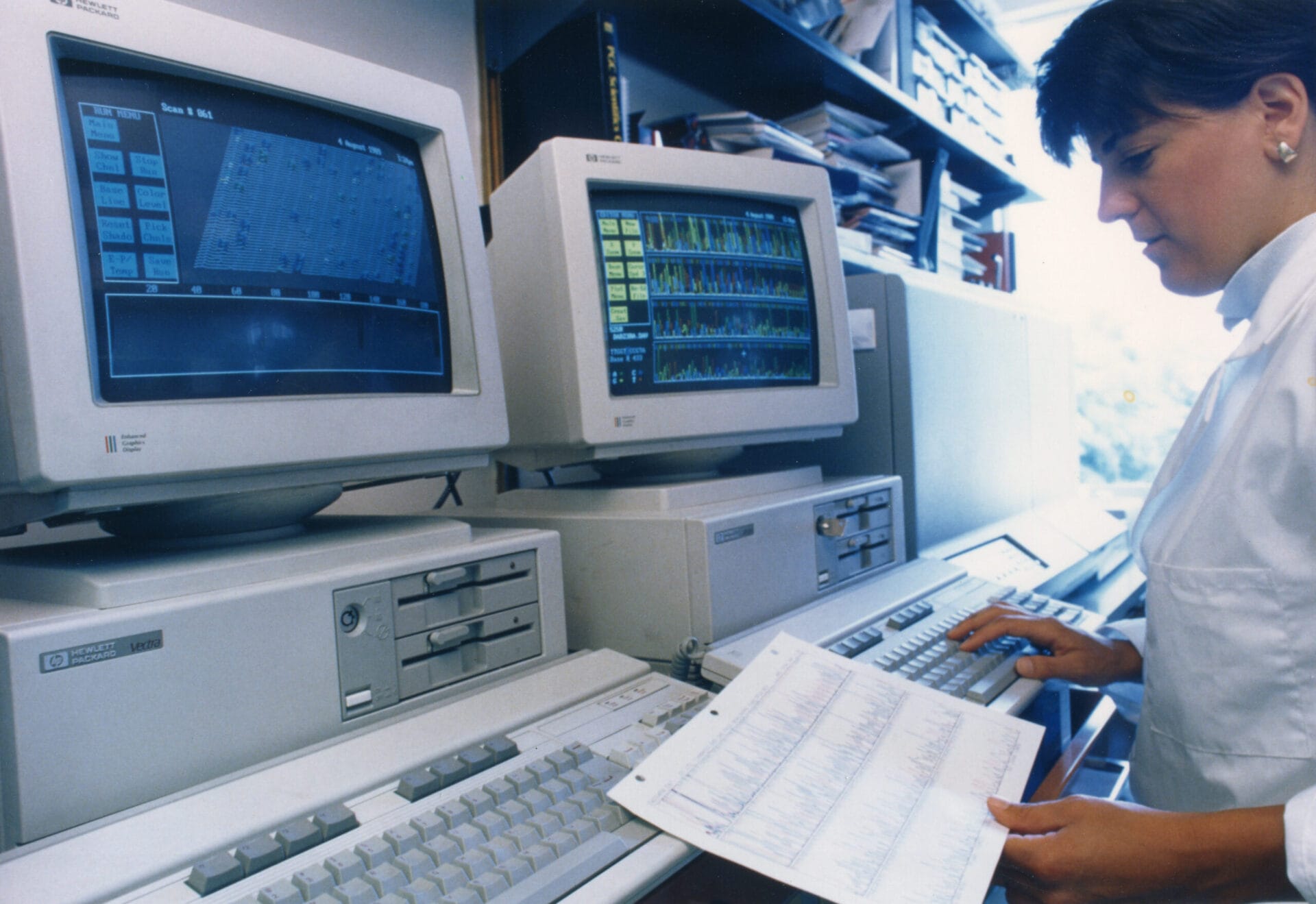What is capillary sequencing?

An evolution of Sanger sequencing, capillary sequencing made it possible to sequence the human genome.
- In the 1980s, Sanger sequencing became automated, using dyes instead of radioactively labelled DNA bases. This made the process much quicker, more efficient and safer.
- Techniques continued to evolve, leading to capillary sequencing in the early 1990s – using a long, thin capillary fibre rather than a gel to separate the DNA fragments.
- This technique made sequencing scalable and was used throughout the Human Genome Project.
Key terms
DNA
(deoxyribonucleic acid) A molecule that carries the genetic information necessary to build and maintain an organism.
Base
(or nucleotide) The basic unit of genetic instructions. DNA is encoded in four chemical bases: adenine (A), thymine (T), cytosine (C ) and guanine (G).
DNA sequencing
The process of determining the order of bases in a section of DNA.
Genome
The complete set of genetic instructions required to build and maintain an organism.
What is capillary sequencing?
-
- In the 1980s, Sanger sequencing became automated, replacing radioactive bases with fluorescent coloured dyes (A = Green, C = Blue, G = Yellow and T = Red) that are read with a machine.
- This made the process much safer.
- Capillary sequencing was a further evolution of this method – rather than using gel-based techniques to separate the DNA fragments, it uses a long, thin capillary fibre rather than a gel to separate the DNA fragments. The machine makes the coloured bases fluoresce then reads and records their sequence.
- This was able to process a much larger set of samples. Instead of sequencing 24 samples like the gel-based sequencing machine, early capillary sequencers could manage 96 samples.
What are the main steps of capillary sequencing?
In capillary sequencing machines, DNA fragments are separated by size through a long, thin, acrylic-fibre capillary. This is instead of an electrophoresis gel, as with the Sanger method.
- A sample containing fragments of fluorescently labelled DNA is injected into the capillary. This is done by dipping the capillary and an electrode into a solution of the sample.
- Briefly applying an electric current causes the DNA fragments to travel through to the end of the capillary. The small diameter of the capillary allows for the use of extremely high electric fields, and consequently, very rapid separation of DNA sequencing fragments.
- A fluorescence-detecting laser, built into the machine, then shoots through the capillary fibre, causing the coloured tags on the DNA fragments to fluoresce. Like in Sanger sequencing, each base terminator is labelled differently, in this case with a different colour: A = Green, T = Red, C = Blue, G = Yellow.
- The colour of the fluorescent bases is detected by a camera and recorded by the sequencing machine.
- The colours of the bases are then displayed on a computer as a graph of different coloured peaks. Like this one:

Image credit: Laura Olivares Boldú / Wellcome Connecting Science